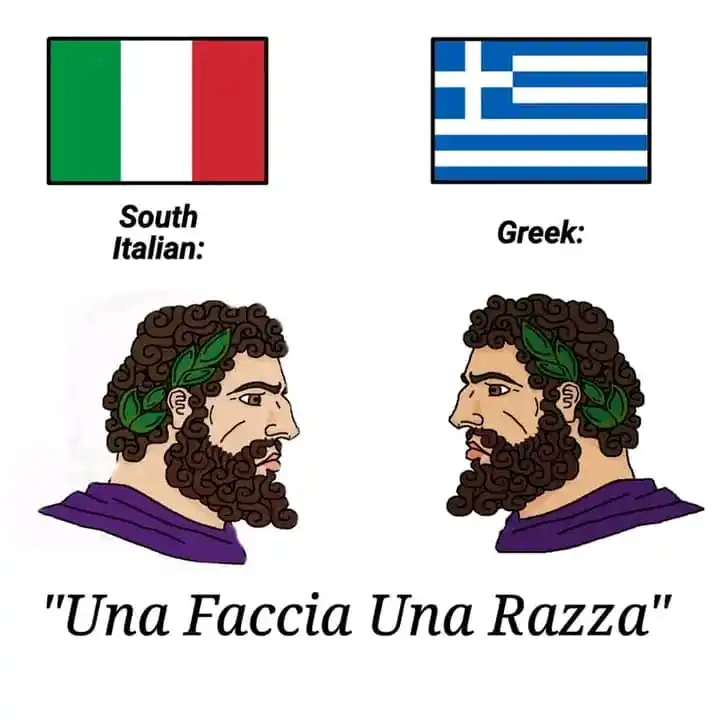
Law, History, Art, Culture And News From Around The World 🌎
205 subscribers
About Law, History, Art, Culture And News From Around The World 🌎
Here we give you something about anything! +263717940205
Similar Channels
Swipe to see more
Posts

Which one is your team?


*On this beautiful morning, I want to tell you that you lit up my day and made my life amazing. Thank you for your unconditional care and love. Good morning*💔❤️🩹❤️

Follow the 𝐓𝐡𝐞 𝐆𝐫𝐨𝐰𝐭𝐡 𝐇𝐮𝐛.♻️💸 channel on WhatsApp: https://whatsapp.com/channel/0029Vb2PhBxDjiOXQWKMcN0d

*The Evolution of Human History Through Inventions* Through out history, there has been inventions people trying to make life easier through communication, movement, and other ways that can and could make life and work more efficient. In my opinion, the most important and key invention is the handwriting. Why? It is through handwriting that people began not to start from scratch but to build on already existing knowledge improving lives for the better. Let us take a look on how handwriting was invented and developed throughout history, and, in due course, acknowledge some inventions that I think were, key in shaping human history. The invention and evolution of handwriting represent one of humanity's most profound achievements, marking the transition from oral traditions to written communication. Unlike many modern inventions, handwriting does not have a single inventor or moment of creation. Instead, it emerged independently across various ancient civilizations, driven by the need for record-keeping, administration, and cultural expression. This essay explores the origins and development of handwriting, highlighting the contributions of key cultures and the enduring impact of this transformative technology. The story of handwriting begins in *ancient Mesopotamia*, around 3400 BCE, with the Sumerians. They developed *cuneiform*, one of the earliest known writing systems. Using a reed stylus to press wedge-shaped symbols into clay tablets, the Sumerians created a method for recording transactions, laws, and literature. Cuneiform was initially used for practical purposes, such as accounting and trade, but it eventually became a medium for preserving myths, poetry, and historical records. This innovation laid the foundation for the concept of written communication. Around the same time, in *ancient Egypt*, another writing system emerged: *hieroglyphs*. These intricate pictorial symbols were used for religious texts, monumental inscriptions, and administrative records. Egyptian scribes wrote on papyrus using brushes and ink, creating a durable and portable medium for writing. Hieroglyphs were not only a practical tool but also a sacred art form, reflecting the Egyptians' deep connection between writing and spirituality. The decipherment of hieroglyphs in the modern era has provided invaluable insights into ancient Egyptian culture and history. In *China*, the development of writing began during the *Shang Dynasty* (c. 1200 BCE) with *oracle bone script*. This early form of Chinese writing was used for divination and record-keeping, inscribed on animal bones and turtle shells. Over time, Chinese characters evolved into a complex and sophisticated system, capable of representing thousands of words and ideas. Chinese writing became a unifying force, enabling the administration of a vast empire and the preservation of a rich literary tradition. Today, Chinese characters remain one of the oldest continuously used writing systems in the world. The *Phoenicians*, a maritime trading culture in the ancient Mediterranean, made a groundbreaking contribution to the history of writing around 1050 BCE. They developed one of the first *alphabetic writing systems*, consisting of 22 symbols representing consonants. This system was simpler and more adaptable than earlier writing systems, making it easier to learn and use. The Phoenician alphabet spread across the Mediterranean, influencing the development of the *Greek* and *Latin* alphabets. The Greeks added vowels to the Phoenician system, creating a more versatile writing system that became the foundation of Western literature and science. The *Romans* further refined the Greek alphabet, developing the *Latin script* that is still used today for many modern languages, including English. Latin script was written on parchment, papyrus, and later paper, and it became the standard for administration, literature, and education in the Roman Empire. The spread of Latin script across Europe during the Roman expansion and the subsequent rise of Christianity ensured its enduring influence. In the *Islamic world*, the *Arabic script* emerged around the 4th century CE, evolving from the Nabataean alphabet. Known for its flowing, cursive style, Arabic script became the medium for the Quran and Islamic literature. As Islam spread across the Middle East, North Africa, and beyond, the Arabic script was adopted for languages such as Persian, Urdu, and Malay. The beauty and versatility of Arabic calligraphy elevated writing to an art form, reflecting the cultural and spiritual significance of the written word. Over time, handwriting evolved into various styles and forms, from the elegant *calligraphy* of East Asia and the Islamic world to the practical *cursive* scripts used in Europe and beyond. The invention of the *printing press* by Johannes Gutenberg in the 15th century revolutionized the production of written texts, but handwriting remained a vital skill and a deeply personal form of expression. Even in the digital age, handwriting continues to hold cultural and educational significance, connecting us to the ancient roots of human communication. It is however worth noting that there are key inventions that changed human history. We might not be able to talk about the all but we can list five (5) most key: 1. *The Light Bulb* - *Inventor*: Thomas Edison (1879) 2. *The Printing Press* - *Inventor*: Johannes Gutenberg (c. 1440) 3. *The Telephone* - *Inventor*: Alexander Graham Bell (1876) 4. *The Airplane* - *Inventors*: The Wright Brothers (Orville and Wilbur Wright, 1903) 5. *The World Wide Web* - *Inventor*: Tim Berners-Lee (1989) These inventions fundamentally changed the course of human history, shaping modern society and improving the quality of life for billions of people. Author: Andrew Kunaka

_Volodymyr Zelenskyy:_ I spoke with South African President @CyrilRamaphosa and thanked him for South Africa’s support of Ukraine’s sovereignty and territorial integrity. It is important that our countries share the same position: nothing about Ukraine without Ukraine. We all hope to achieve a just and lasting peace this year. South Africa’s voice matters, and we count on its support.


Which one do you think is the most key inventions?

Una Faccia, Una Razza: Celebrating the timeless bond between Greece and Southern Italy "Una Faccia, Una Razza" (One Face, One Race) is a powerful Italian phrase that beautifully encapsulates the deep and enduring connection between the Greek and Southern Italian peoples. This phrase speaks to the shared history, culture, and traditions that bind these two groups, particularly in the southern regions of Italy, such as Calabria, Sicily, and Apulia, where Greek colonists once established thriving cities over two millennia ago. The roots of this connection go back to the ancient Greek colonies that dotted the southern Italian coast, forming the foundation of what was known as Magna Graecia. Over centuries, the influence of Greek language, art, philosophy, and customs left a lasting imprint on the local culture of Southern Italy. The ties between the Greeks and Southern Italians are woven through centuries of cultural exchange, blending traditions, cuisine, and even dialects. From shared myths and legends to similar architectural styles and a deep appreciation for family and community, the similarities are striking. The bond is also reflected in the regions' passionate connection to their history, preserving ancient Greek ruins like the temples of Paestum and the city of Neapolis (modern-day Naples). Despite the complex histories of both peoples, with various political and social changes over the years, "Una Faccia, Una Razza" reflects the idea that, at their core, Greeks and Southern Italians are united by a common heritage that transcends time and borders.

*Bond Between Southen Italy and the Greeks*


The man even translates names 😂 Imagine Cyril Ramaphosa being written in Ukrainian like Сирілом Рамафосою


So you guys who voted that Musk is not African America and those who voted saying they've no idea you're now voting that he is African American because you saw there are numbers there?😂😂














